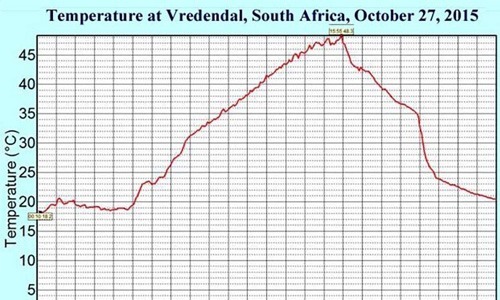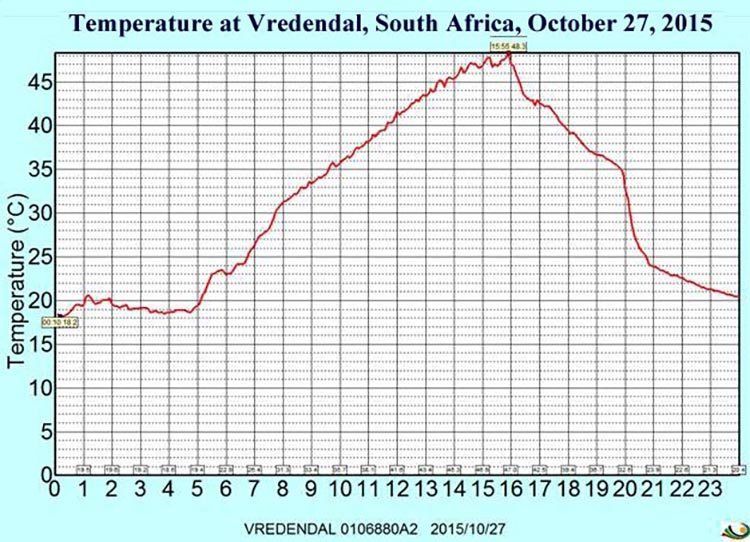

Earth’s hottest temperature ever recorded in the month of October occurred on Tuesday, Oct. 27 in South Africa, when Vredendal hit a remarkable 48.4°C (119.1°F). According to weather records researcher Maximiliano Herrera, this is also the highest temperature ever observed at Vredendal and the third highest temperature in South African history.
The new global October heat record was made possible by a “Berg wind” — a hot dry wind blowing down the Great Escarpment from the high central plateau to the coast. As the air descended it warmed via adiabatic compression, causing the record heat. These sorts of foehn winds are commonly responsible for all-time record temperatures; mainland Antarctica’s all-time record high of 17.5°C (63.5°F), set on March 24, was due, in part, to a foehn wind (see wunderground weather historian Christopher C. Burt’s blog post on this).
According to Herrera, the previous world October heat record of 47.3°C was set at Campo Gallo, Argentina on Oct. 16 1936, and South Africa’s highest reliable temperature for any month is 48.8°C (119.8°F), recorded at Vioosdrif in January 1993.

Arabian Sea’s Tropical Cyclone Chapala a Threat to Yemen and Oman
In the Arabian Sea, Tropical Cyclone Chapala has spun up to hurricane strength, with top winds of 75 mph estimated at 8 a.m. EDT Thursday by the Joint Typhoon Warning Center. Chapala is expected to take advantage of low wind shear, warm ocean waters near 30°C (86°F) and favorable upper-level outflow to intensify into a Category 4 storm by Sunday. Thereafter, weakening is likely as the storm encounters higher wind shear, lower oceanic heat content and interaction with land. Chapala is likely to make landfall on Monday in a sparsely populated area near the border of Yemen and Oman.

YOU MIGHT ALSO LIKE
Imagine If Exxon Had Told the Truth on Climate Change
12 Tweets Worth Noting on GOP Debate on Climate and Renewables
Stunning Drone Footage Shows Greenland Literally Melting Away
Why Climate Change Is Responsible for Record-Breaking Hurricanes Like Patricia

 233k
233k  41k
41k  Subscribe
Subscribe 